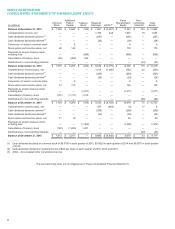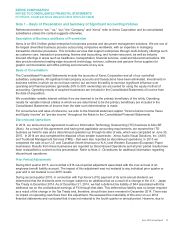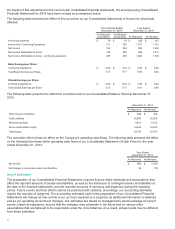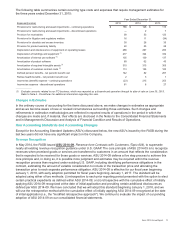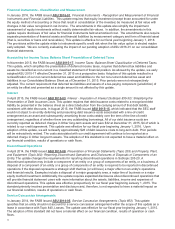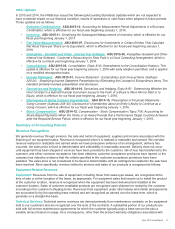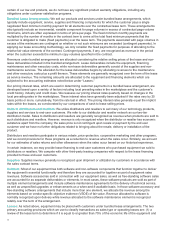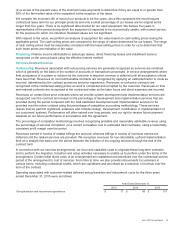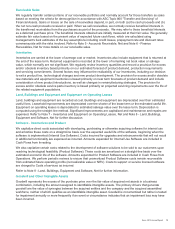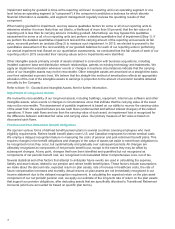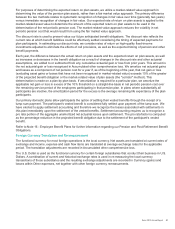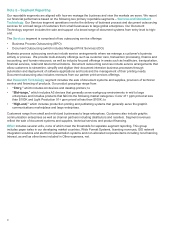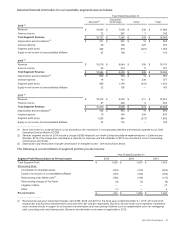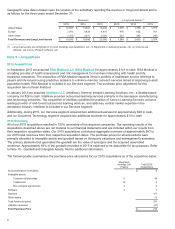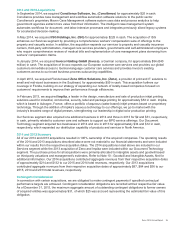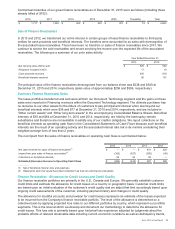Xerox 2015 Annual Report Download - page 95
Download and view the complete annual report
Please find page 95 of the 2015 Xerox annual report below. You can navigate through the pages in the report by either clicking on the pages listed below, or by using the keyword search tool below to find specific information within the annual report.Receivable Sales
We regularly transfer certain portions of our receivable portfolios and normally account for those transfers as sales
based on meeting the criteria for derecognition in accordance with ASC Topic 860 "Transfer and Servicing" of
Financial Assets. Gains or losses on the sale of receivables depend, in part, on both (a) the cash proceeds and (b)
the net non-cash proceeds received or paid. When we sell receivables, we normally receive beneficial interests in
the transferred receivables from the purchasers as part of the proceeds. We may refer to these beneficial interests
as a deferred purchase price. The beneficial interests obtained are initially measured at their fair value. We generally
estimate fair value based on the present value of expected future cash flows, which are calculated using
management's best estimates of the key assumptions including credit losses, prepayment rate and discount rates
commensurate with the risks involved. Refer to Note 5 - Accounts Receivable, Net and Note 6 - Finance
Receivables, Net for more details on our receivable sales.
Inventories
Inventories are carried at the lower of average cost or market. Inventories also include equipment that is returned at
the end of the lease term. Returned equipment is recorded at the lower of remaining net book value or salvage
value, which normally are not significant. We regularly review inventory quantities and record a provision for excess
and/or obsolete inventory based primarily on our estimated forecast of product demand, production requirements
and servicing commitments. Several factors may influence the realizability of our inventories, including our decision
to exit a product line, technological changes and new product development. The provision for excess and/or obsolete
raw materials and equipment inventories is based primarily on near term forecasts of product demand and include
consideration of new product introductions, as well as changes in remanufacturing strategies. The provision for
excess and/or obsolete service parts inventory is based primarily on projected servicing requirements over the life of
the related equipment populations.
Land, Buildings and Equipment and Equipment on Operating Leases
Land, buildings and equipment are recorded at cost. Buildings and equipment are depreciated over their estimated
useful lives. Leasehold improvements are depreciated over the shorter of the lease term or the estimated useful life.
Equipment on operating leases is depreciated to estimated salvage value over the lease term. Depreciation is
computed using the straight-line method. Significant improvements are capitalized and maintenance and repairs are
expensed. Refer to Note 7 - Inventories and Equipment on Operating Leases, Net and Note 8 - Land, Buildings,
Equipment and Software, Net for further discussion.
Software - Internal Use and Product
We capitalize direct costs associated with developing, purchasing or otherwise acquiring software for internal use
and amortize these costs on a straight-line basis over the expected useful life of the software, beginning when the
software is implemented (Internal Use Software). Costs incurred for upgrades and enhancements that will not result
in additional functionality are expensed as incurred. Amounts expended for Internal Use Software are included in
Cash Flows from Investing.
We also capitalize certain costs related to the development of software solutions to be sold to our customers upon
reaching technological feasibility (Product Software). These costs are amortized on a straight-line basis over the
estimated economic life of the software. Amounts expended for Product Software are included in Cash Flows from
Operations. We perform periodic reviews to ensure that unamortized Product Software costs remain recoverable
from estimated future operating profits (net realizable value or NRV). Costs to support or service licensed software
are charged to Costs of services as incurred.
Refer to Note 8 - Land, Buildings, Equipment and Software, Net for further information.
Goodwill and Other Intangible Assets
Goodwill represents the excess of the purchase price over the fair value of acquired net assets in a business
combination, including the amount assigned to identifiable intangible assets. The primary drivers that generate
goodwill are the value of synergies between the acquired entities and the company and the acquired assembled
workforce, neither of which qualifies as an identifiable intangible asset. Goodwill is not amortized but rather is tested
for impairment annually or more frequently if an event or circumstance indicates that an impairment loss may have
been incurred.
Xerox 2015 Annual Report 78



